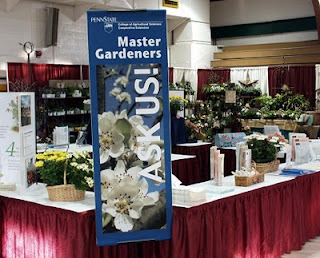 |
| Winterberry holly bent badly in the October snow storm. It recovered. |
 |
| Japanese Zelkova after the storm... beyond repair |
Southeastern Pennsylvania certainly could use more trees. In fact, research done in 2002 showed an alarming loss of tree cover in the metro Philly area. In response, Tree Vitalize was born. This private/public partnership has the goal of establishing one million new trees. Quoting from the Tree Vitalize website... “An additional goal is to train 10,000 volunteers in basic tree biology and tree care to assist their communities in establishing and maintaining new plantings. Ultimately, the goal of TreeVitalize is to establish strong urban forestry partnerships in all 14 Pennsylvania metropolitan areas and to build local capacity for sustaining the urban forest resource.” If I am reading the website correctly 296,952 trees have been planted so far. It is a wonderful program. Check it out at http://www.treevitalize.net/ . The volunteer portion of the program is called Tree Tenders and training is ongoing in many communities. See this for details.
Tree Vitalize and Tree Tenders are great programs for communities that want to establish trees. They are not designed to assist private property owners.
 |
| Bucks County Master Gardeners plant bare-root Tree Vitalize trees |
OK. Back to your yard….Maybe you have other reasons to plant trees and shrubs. Still trying to sell that house? Realtors will tell you that well landscape properties have exceptional value. Whatever your motivation, tree planting is a good idea. So where to start….
Penn State has lots of help. Trees for Pennsylvania Landscapes and Shrubs for Pennsylvania Landscapes are two excellent references. They describe great plants and categorize them by size and other characteristics such as flowering habit, fall foliage, etc.
Now is a great time to consider where to locate new landscape plants. Your local garden center/nursery usually has a landscape designer on staff to talk this through with you. Check out the Penn State publication Landscaping Home Grounds for some basic principles of landscape design and you’ll be a step ahead when you begin this conversation.
Finally…the actual planting. You can let the professionals do this or tackle it yourself. Planting and After Care of Community Trees will give you good guidance. Or, for a great, short video on the tree planting process, just watch the video produced by the Penn State Master Gardeners of Berks County at this site.
Alright, you’ve got all winter to read, study, talk and plan for tree and shrub planting this spring. Unique, beautiful, long-lived, wildlife-supporting plants are ready and waiting for new homes. It’s up to you to do your part.





















 What's blooming? What's chewing on my trees? What's that bug? When is the last frost? We'll explore timely horticultural happenings and observations of Nature in this blog. For the most part, these observations will be made in Southeastern Pennsylvania... with occasional notes from afar.Penn State Extension has tremendous resources related to much of what will appear here. I'll link you to sites that will provide more in-depth information.
What's blooming? What's chewing on my trees? What's that bug? When is the last frost? We'll explore timely horticultural happenings and observations of Nature in this blog. For the most part, these observations will be made in Southeastern Pennsylvania... with occasional notes from afar.Penn State Extension has tremendous resources related to much of what will appear here. I'll link you to sites that will provide more in-depth information.

